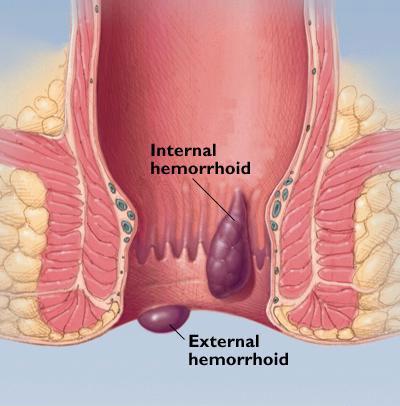
Best Piles Clinic in Nashik
Panacea Clinic is the best piles clinic in Nashik managed by Dr. Jaideep Somvanshi. He provides the most effective piles treatment in Nashik at the Panacea Clinic. This clinic offersthe most advancement treatments realted to piles,fissure and surgeries.
Swellings or swollen haemorrhoids that occur inside and around the anus, as well as along the anal canal, are known as piles. Haemorrhoids are masses, clumps, or cushions of tissue in the anal canal that are full of blood vessels, support tissue, muscle, and elastic fibres.
Haemorrhoids are present in all. However, piles occur when the haemorrhoids that guard the anal passage become too large due to inflammation, causing the vein walls to become stretched, weak, and irritated by-passing bowel movements.
The majority of the times, piles dissipate on their own.
There are two types of piles:
Internal Piles are found deep inside the rectum and are not visible or felt. Bleeding is normally the only symptom.
Internal piles are divided into four categories:
Grade 1: These are small haemorrhoids inside the anus lining.
Grade 2 haemorrhoids are considerably larger than grade 1 haemorrhoids and often lie inside the anus. These haemorrhoids may be forced out when passing stool, but they will eventually return to their original location.
Grade 3: Also known as 'prolapsed haemorrhoids,' these are a form of haemorrhoids that have prolapsed. They appear on the outskirts of the anus. By pressing against them with his fingertips, the patient can force them back in.
Grade 4: These haemorrhoids are unable to be pushed back and will remain outside the anus. They must be examined by a doctor, who would most likely recommend surgery.
External Piles - are positioned around the anus, just beneath the skin, where many pain-sensing nerves are located. As a result, they both hurt and bleed.
Piles can affect people of all ages. Although it has been found that piles most often impact people over the age of 45.
About half of all people will suffer from this condition at some point in their lives. It is also experienced by pregnant women. Though the exact cause of haemorrhoids is unknown, researchers believe it is caused by a hereditary disorder of weak veins or varicose veins resulting in haemorrhoids and so it advices to take appropriate treatment from the best piles clinic around you.
Piles Signs and Symptoms
- The anus bleeds a bright red colour. Blood can stain the toilet paper or the bowel movement.
- Constipation causes pain.
- A lump or a painful swelling above the anus
- Itching in the anal region
- A secretion of mucus from the anus
- The anus is surrounded by a hard lump.
- The skin around the anus becomes irritated and red.
Piles and their Causes
The following are the most common causes of piles:
- Disposition to piles due to genetics
- Constipation and diarrhoea are caused by a lack of fibre in the diet, insufficient fluid consumption, and a sedentary lifestyle. Constipation and diarrhoea are caused by excessive sitting or standing for long periods of time.
- Long stretches of time spent on the toilet
- Anal intercourse
- Pregnancy
- Heavy weight lifting on a regular basis
- Being obese
- Prior bowel surgery
Pile Diagnosis
If your doctor thinks you have piles, he will examine your anus to see if you have haemorrhoids. He may even do a digital rectal exam to see if there are any signs of piles in the anus.
A sigmoidoscopy, a form of additional examination, may be recommended by the doctor.
Your doctor will use a small camera to diagnose an internal haemorrhoid during a sigmoidoscopy (small fibre-optic camera). The sigmoidoscope is inserted into your rectum through a narrow tube. It gives a clear view of the inside of your rectum and highlights any anomalies there. Other examinations, such as colonoscopy, anoscopy, and proctoscopy, may be recommended by the doctor.
Piles Treatment
- Piles usually go away on their own, but if the symptoms are serious, they can need medication or even surgery.
- Piles treatment in Nashik varies depending on whether they are internal or external.
- Internal haemorrhoids in grades one and two are normally treated with medicine and a diet of fibrous, non-spicy foods. Doctors can also recommend a topical cream in some cases.
- Internal haemorrhoids in grade three may be treated with medication and a change of diet, but if the symptoms are serious, surgery may be required. Grade four internal piles treatment requires prompt surgical intervention especially if gangrenous tissue is found at a well-equipped and best piles clinic in Nashik.
External piles are usually treated with haemorrhoid creams or ice packs to minimise swelling. If the situation is too severe, the doctor may recommend surgery, which may include the following:
- Haemorrhoids are removed.
- Burning pile-affected tissue with an infrared photo, laser, or electrical coagulation.
- Sclerotherapy to eliminate varicose veins which could be the cause of piles.
Exercise:
Exercising can easily reduce the symptoms of piles. You can go for exercises such as:
- Brisk walking
- Deep breathing exercises
- Stretching exercises
- Aerobics
- Kegel exercises 3 times every day -
How to perform Kegels:
- Contracting your pelvic muscles. It is akin to the action you do when you hold urination.
- Squeeze and hold for three seconds then relax for another 3 seconds.
- Repeat the exercise 10 times each session, until you can do as many as 15 repetitions.